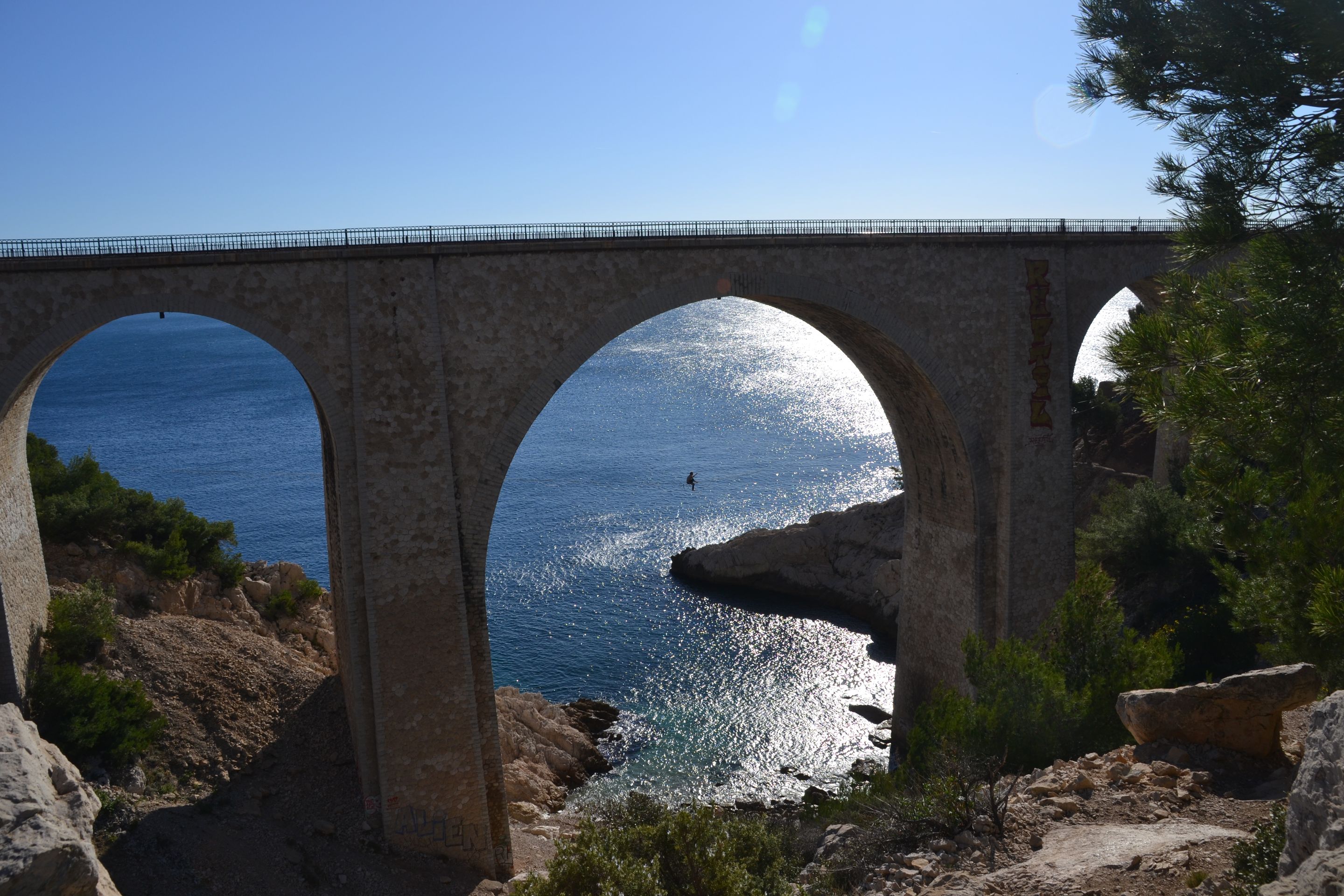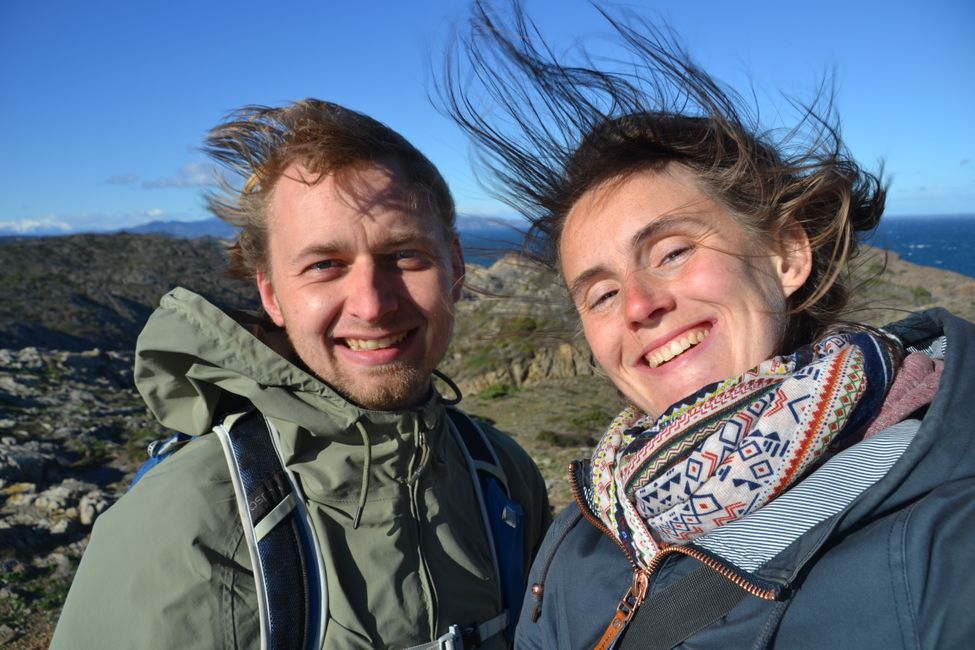#114 Location for Mamma Mia filming and vacation destination of the gods: the beautiful Pelion
ꯐꯣꯉꯈ꯭ꯔꯦ꯫: 29.04.2022
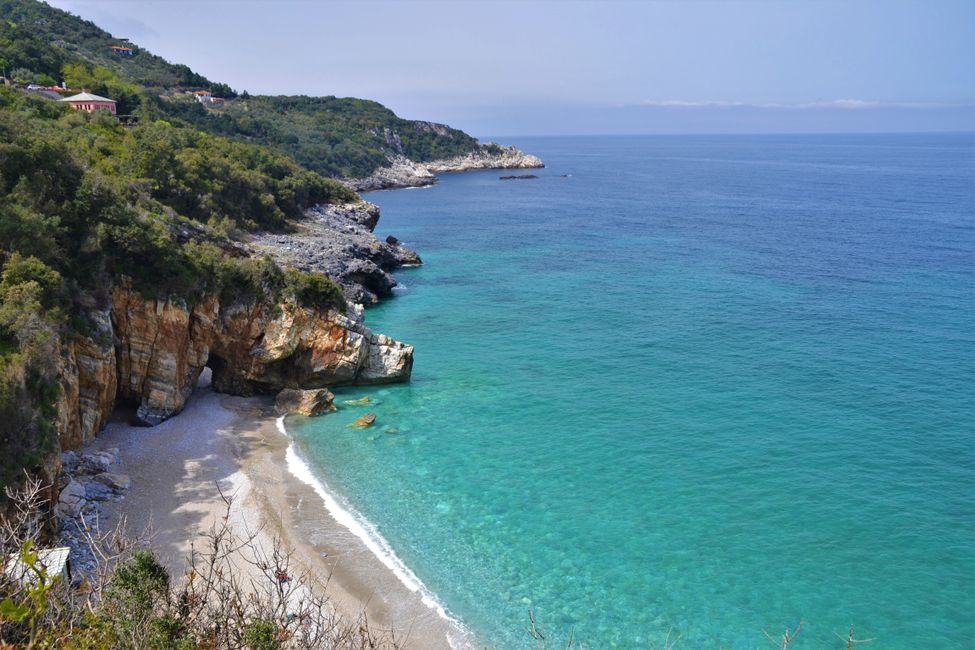
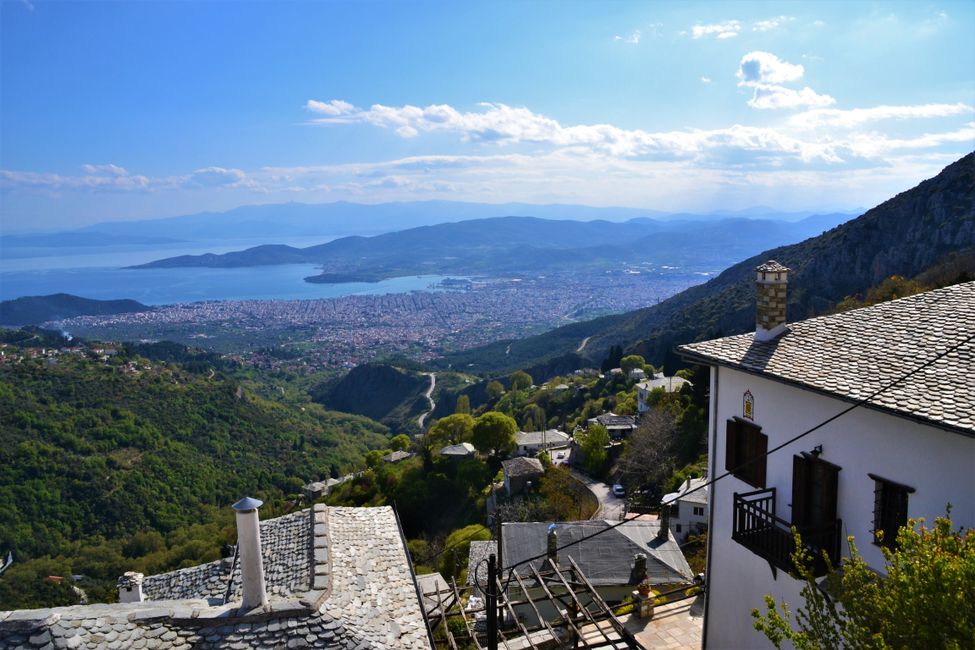
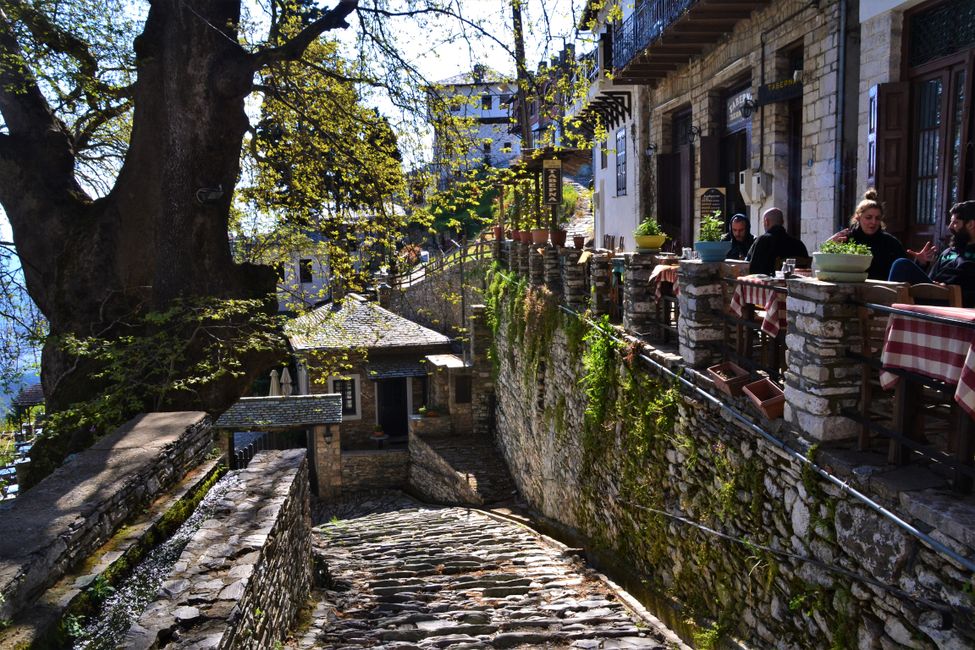
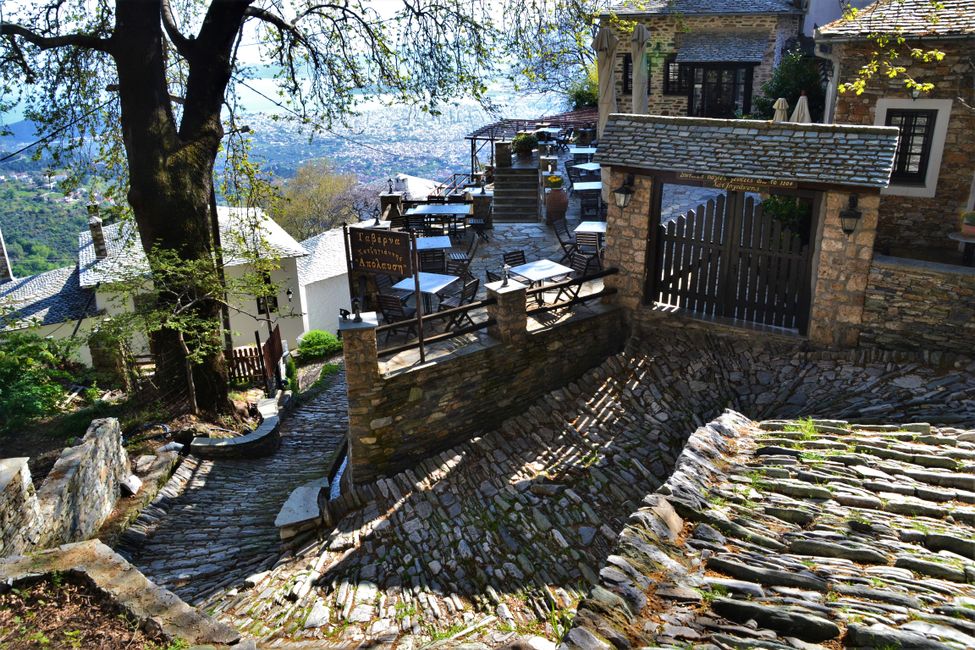
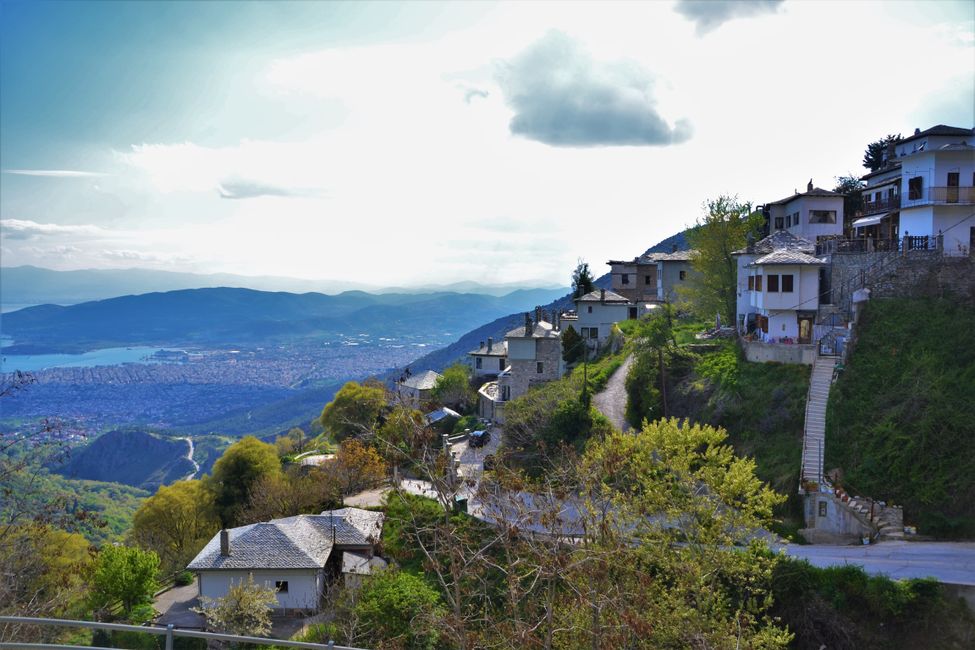
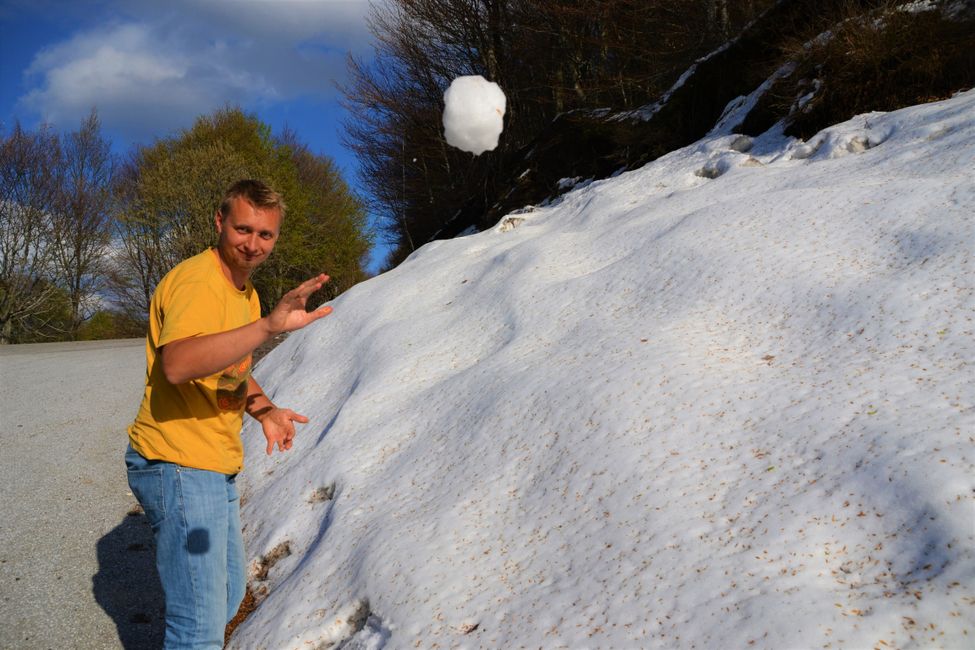
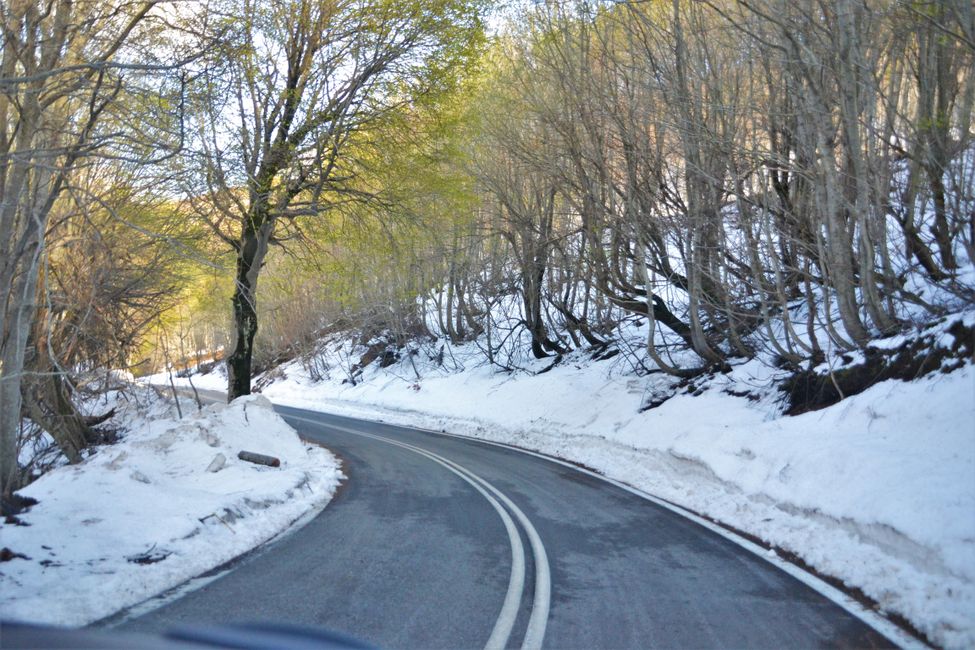
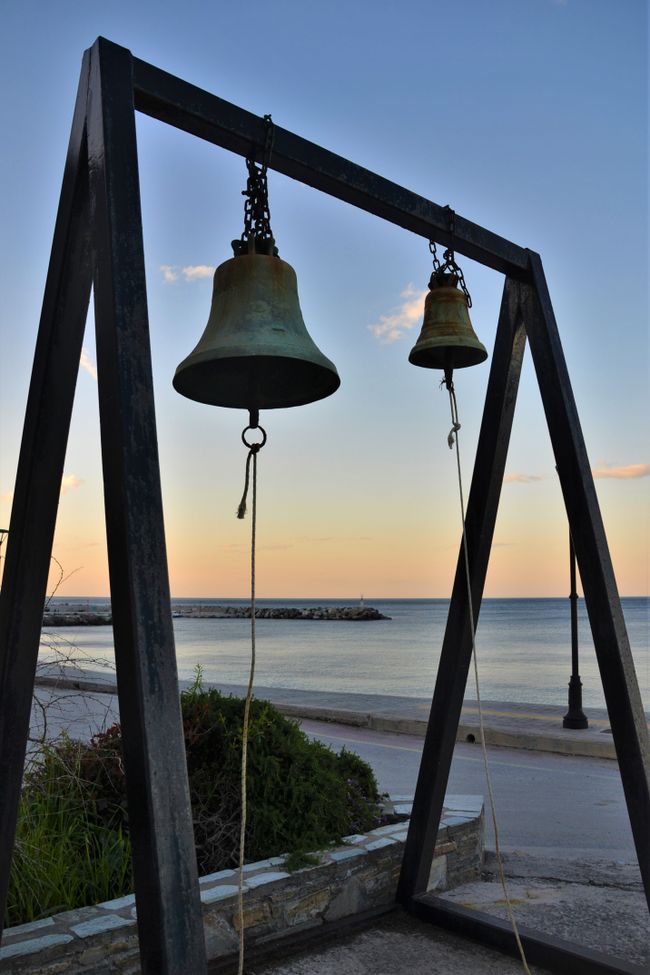
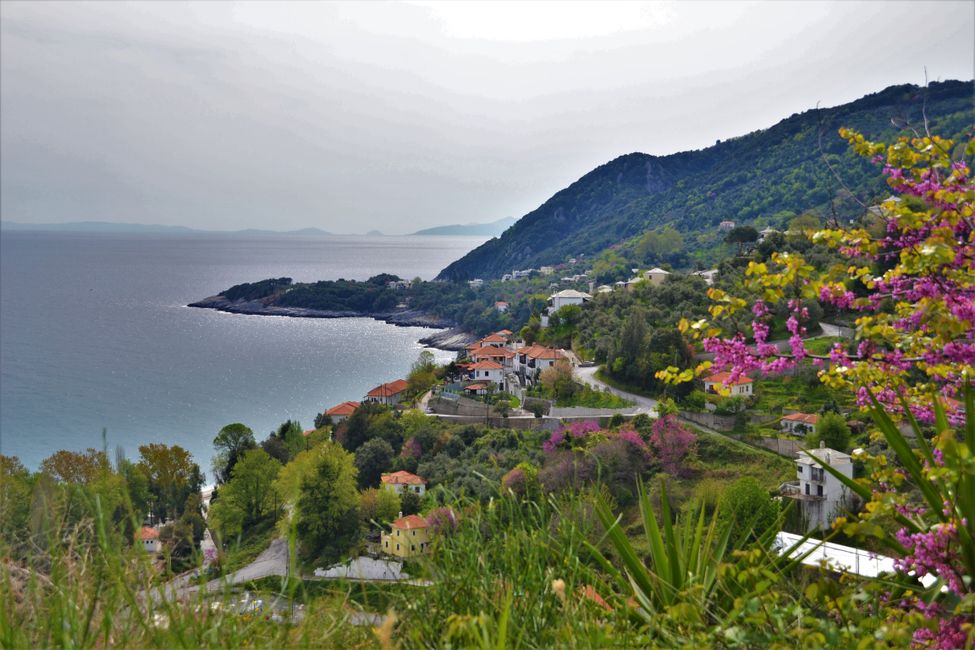
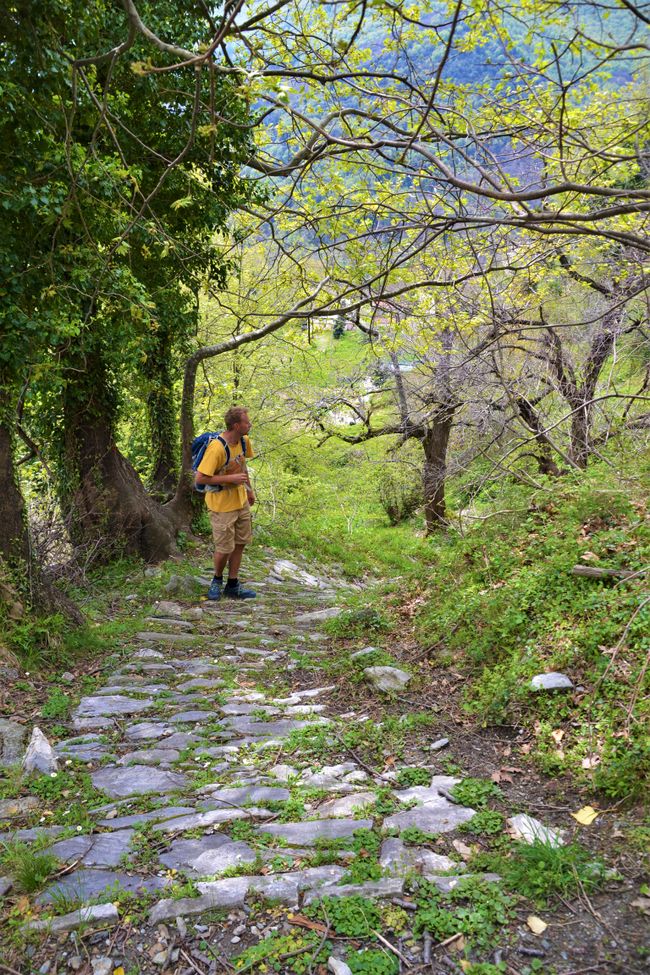
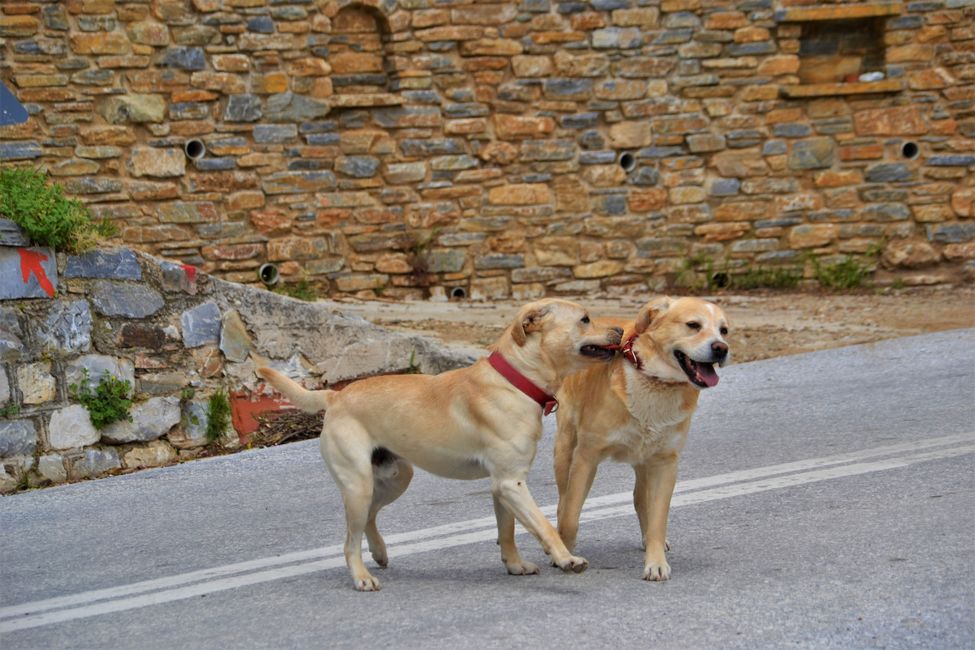
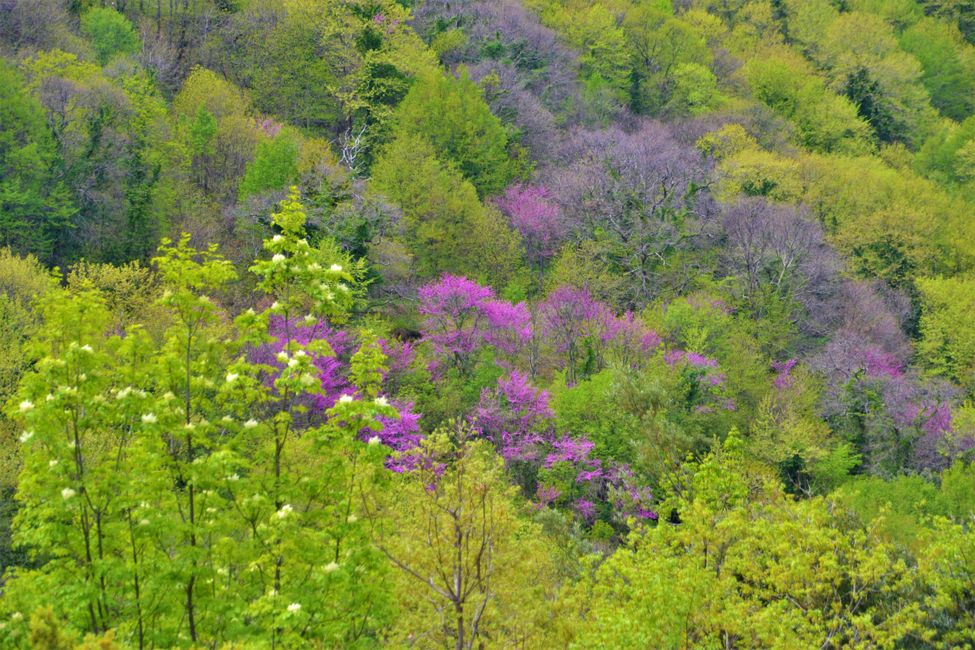
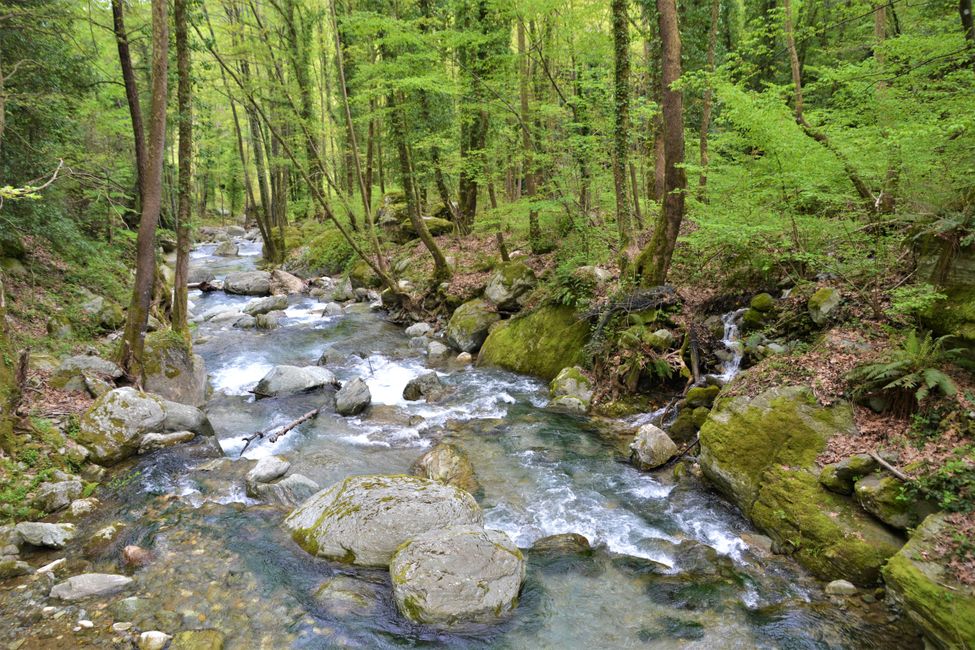
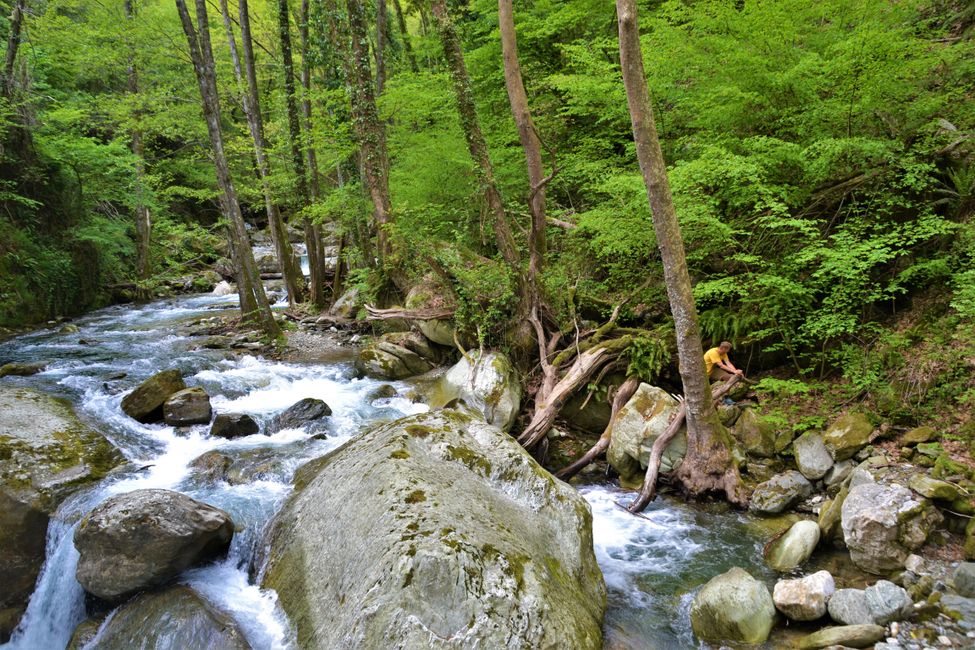
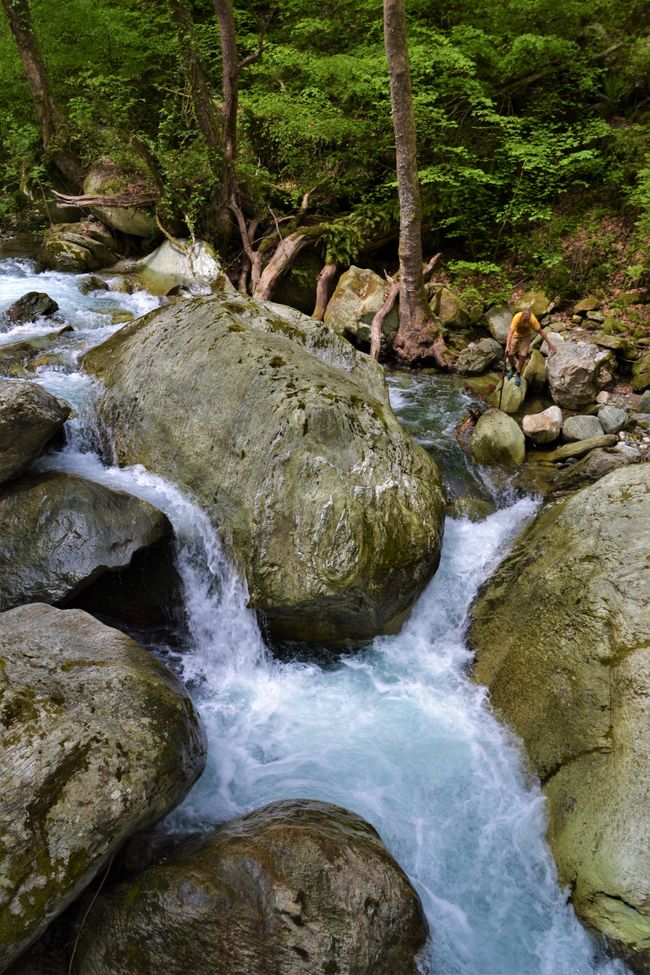
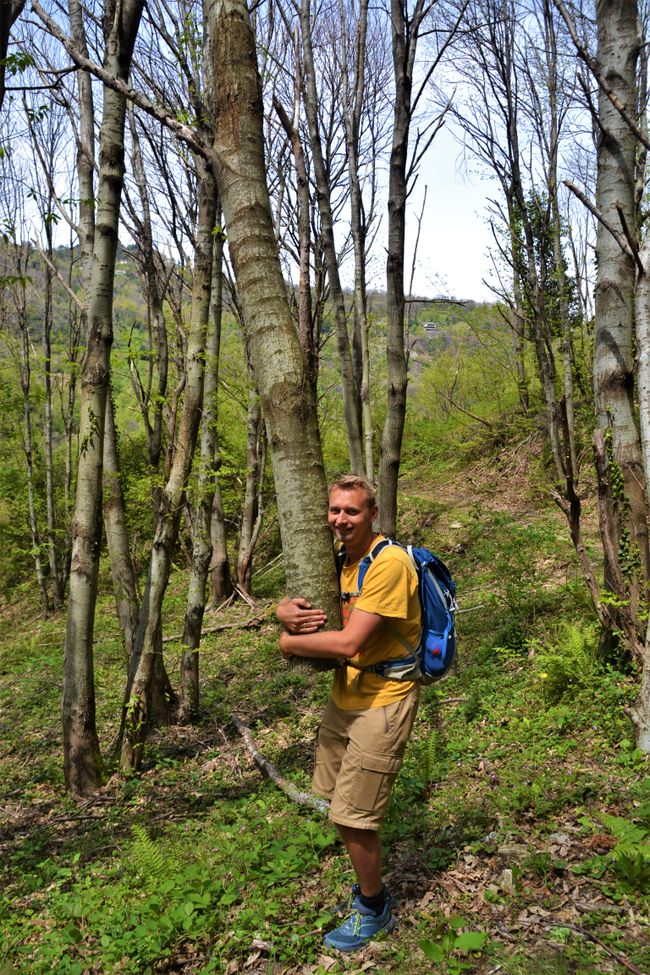
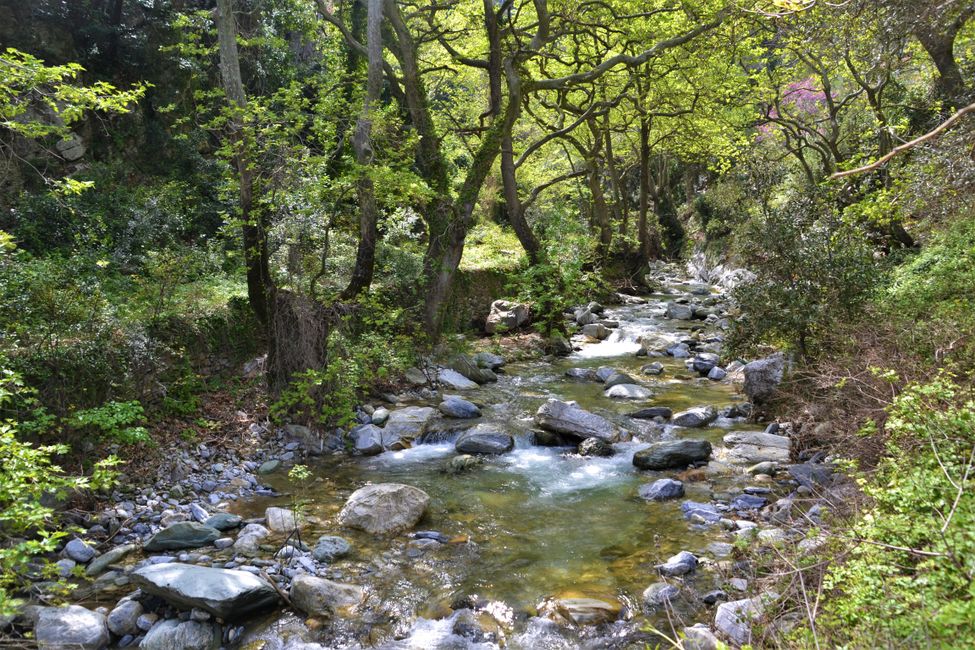
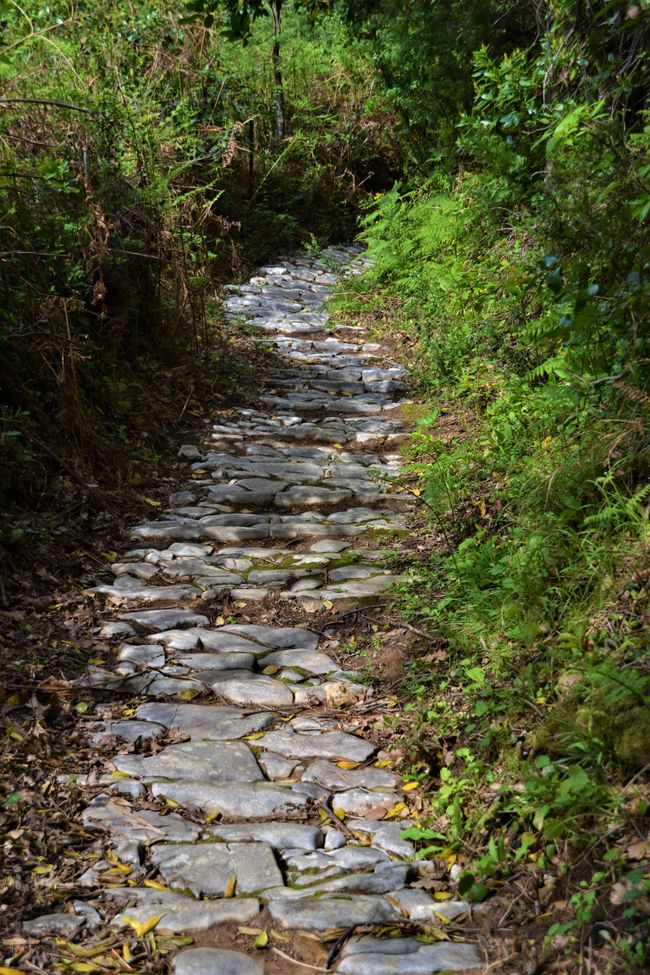
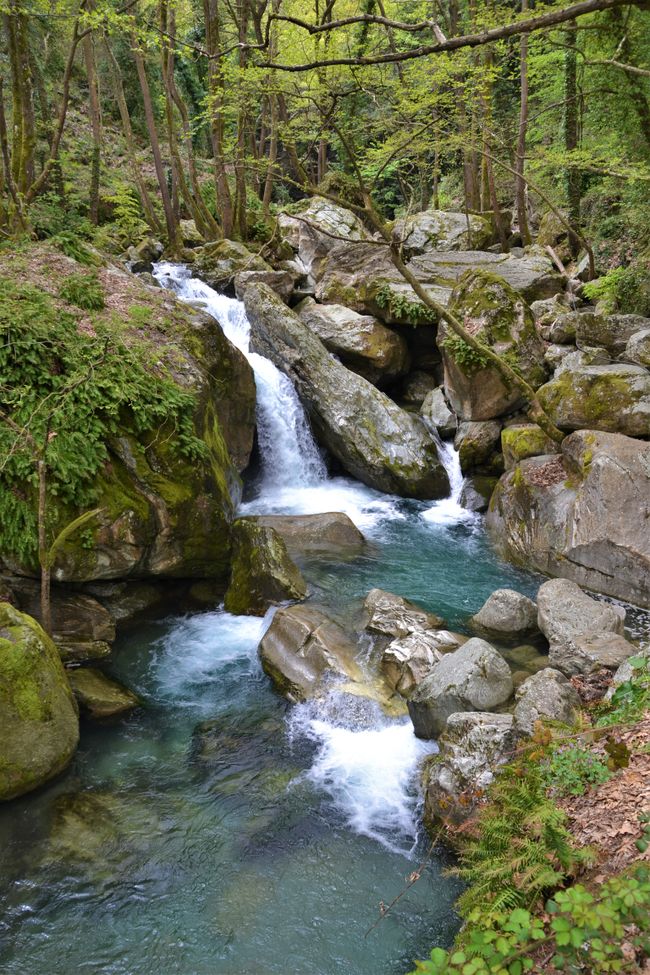
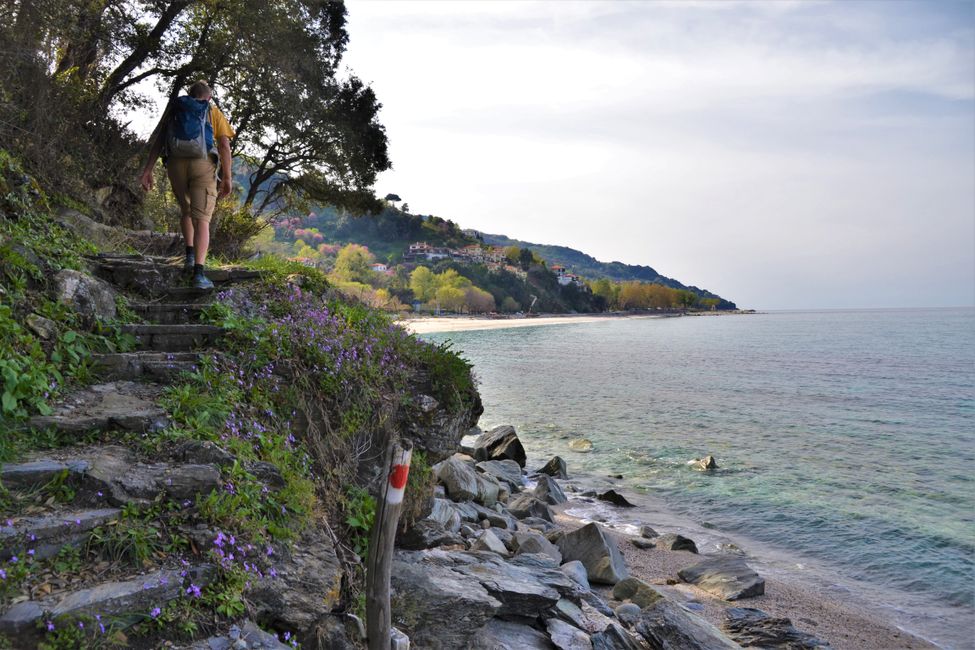
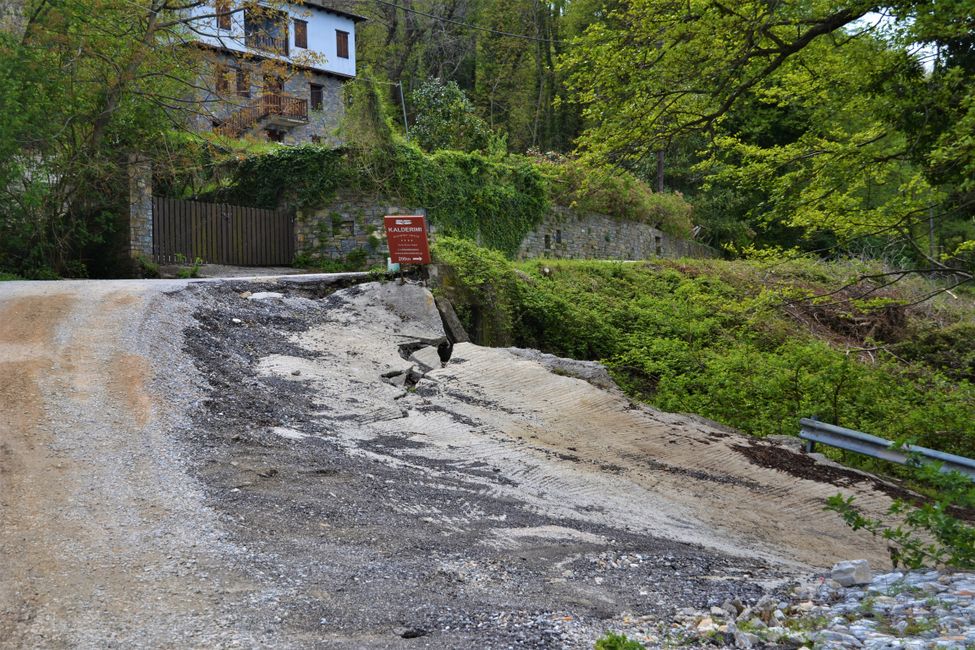
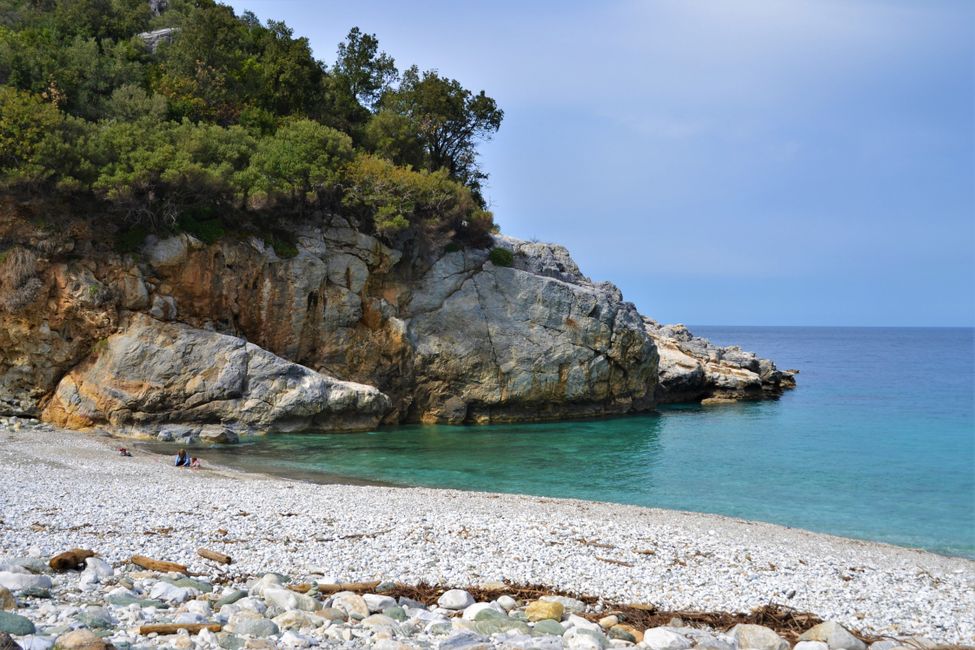
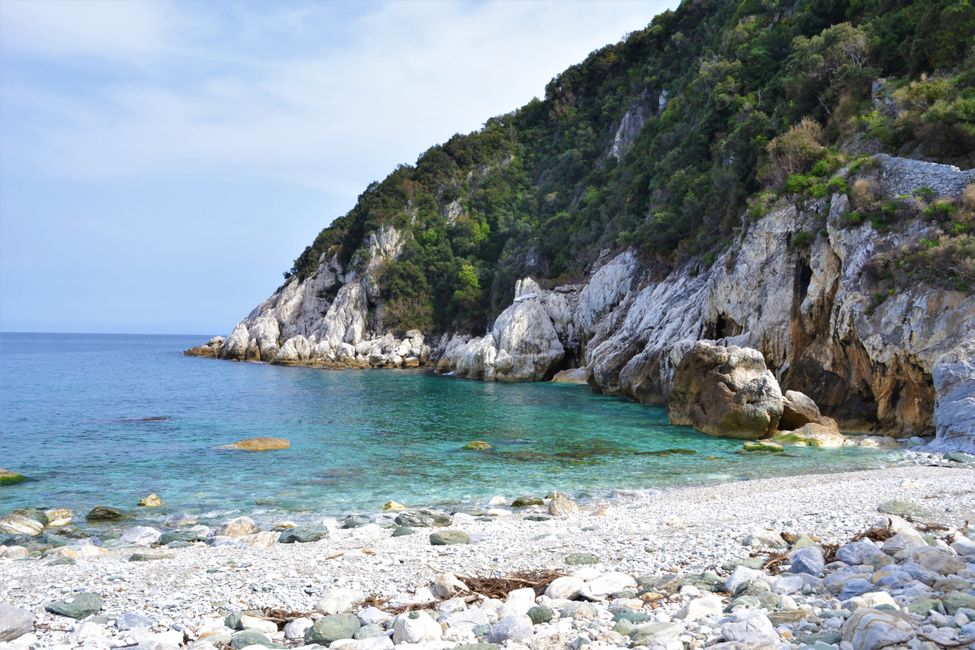
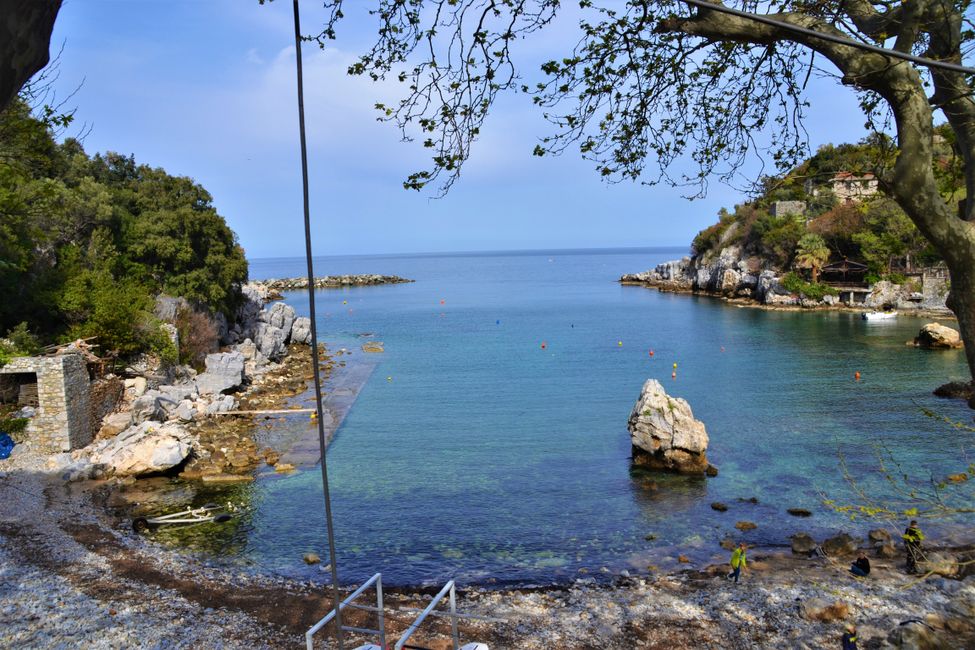
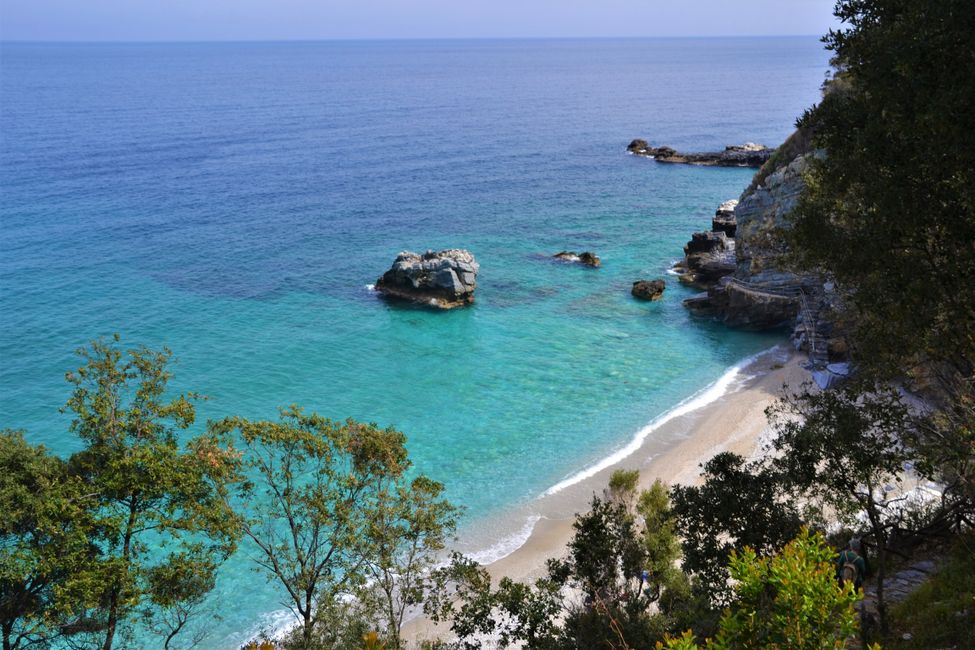
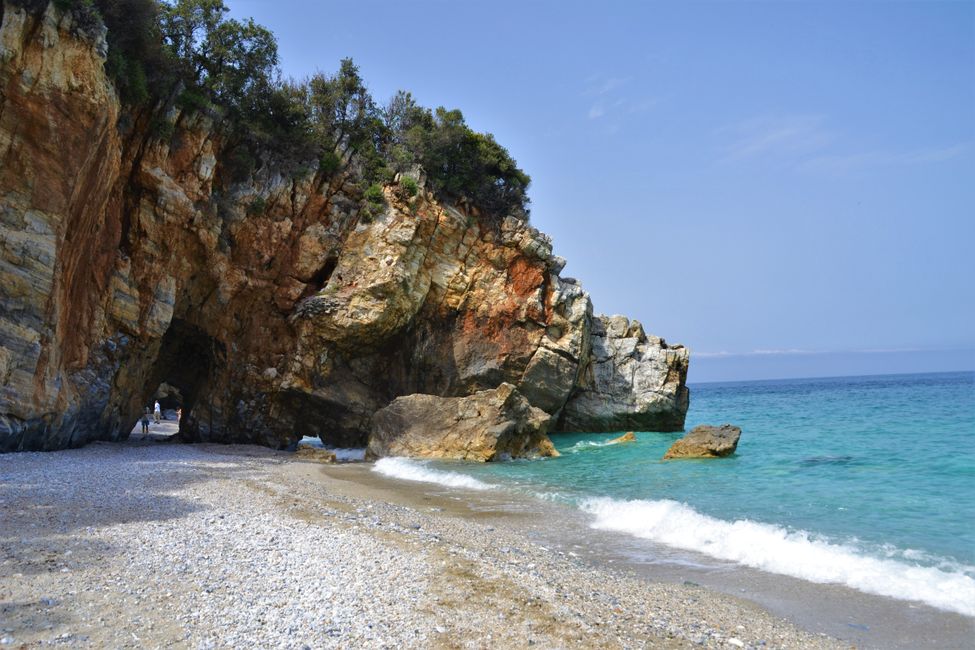
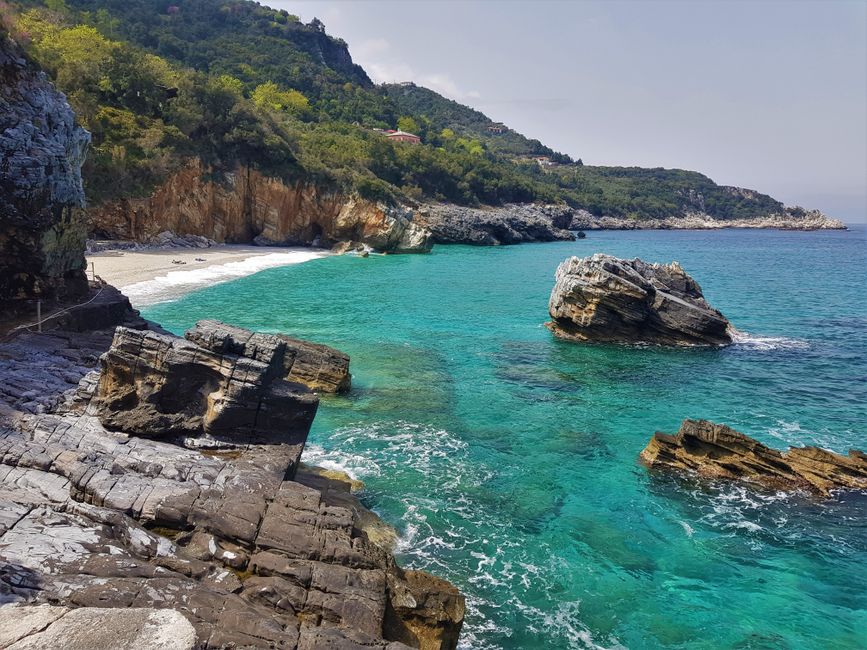
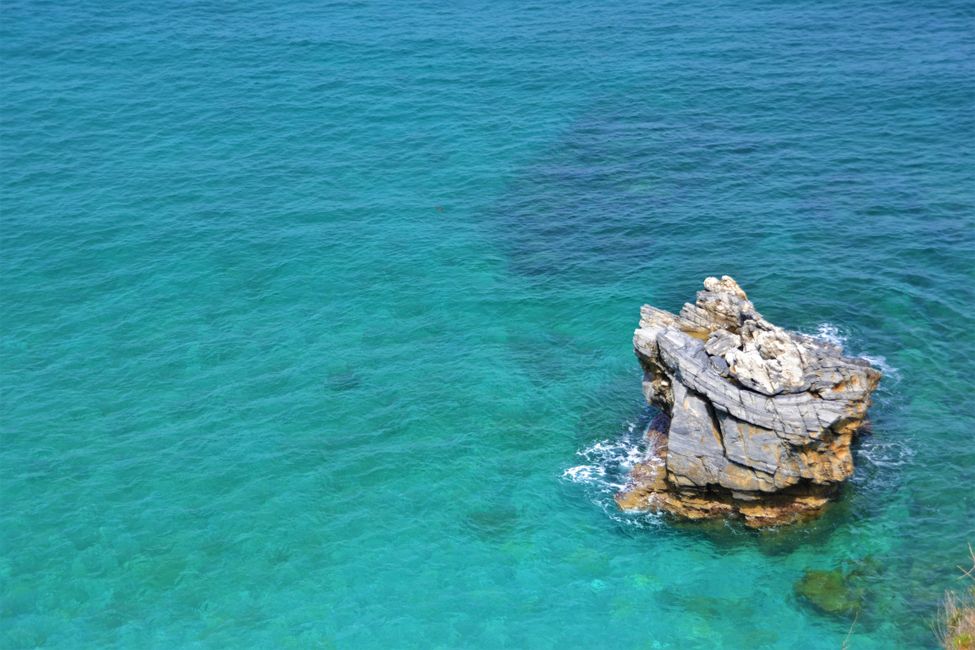
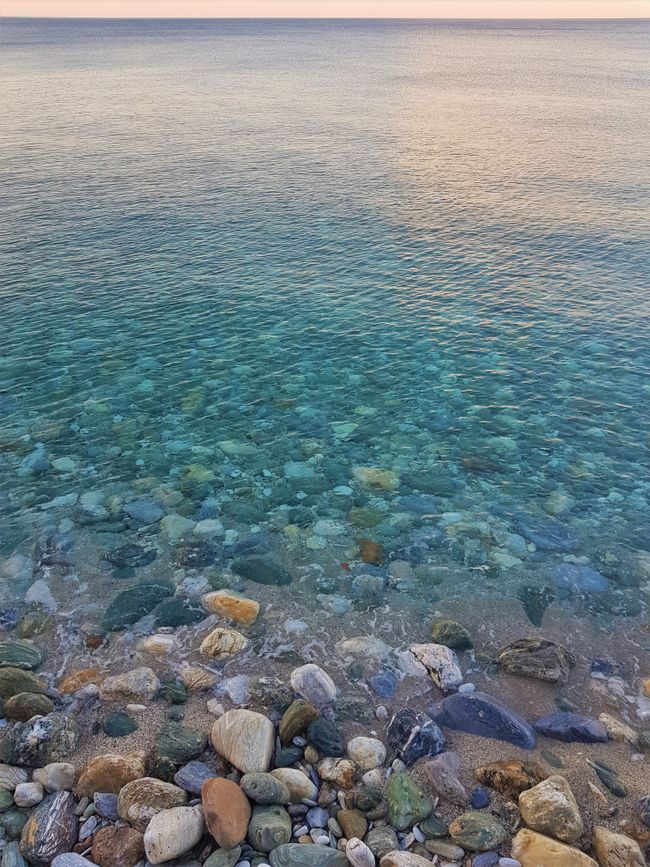
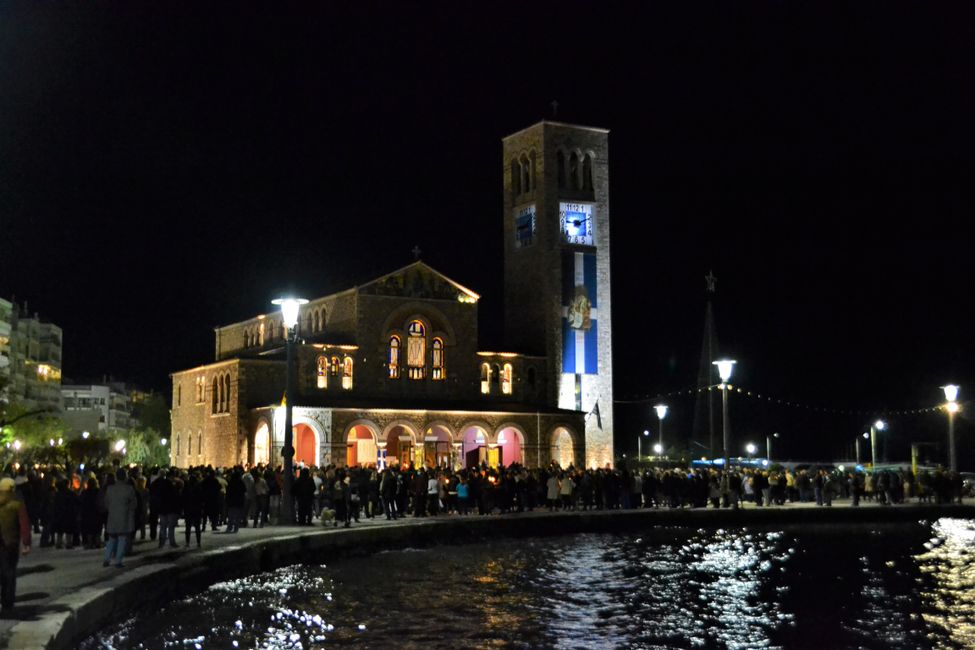
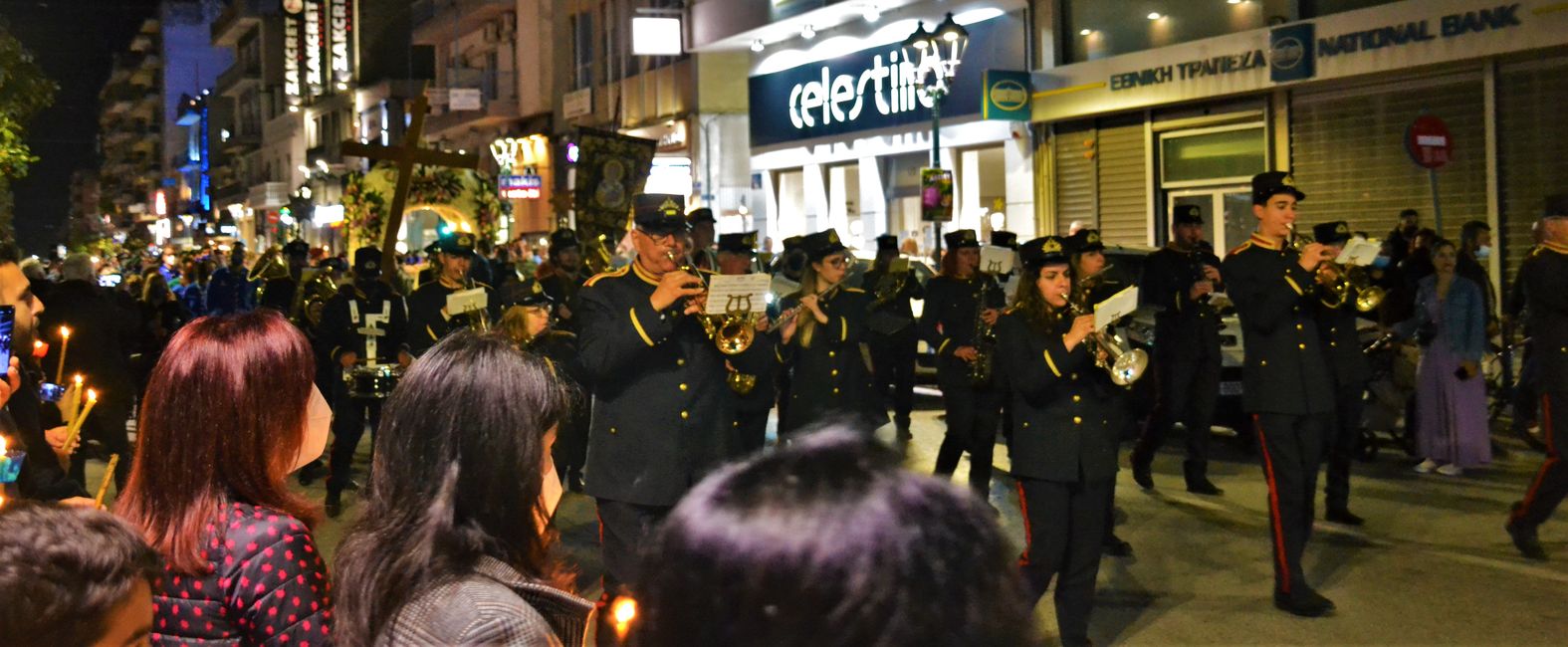
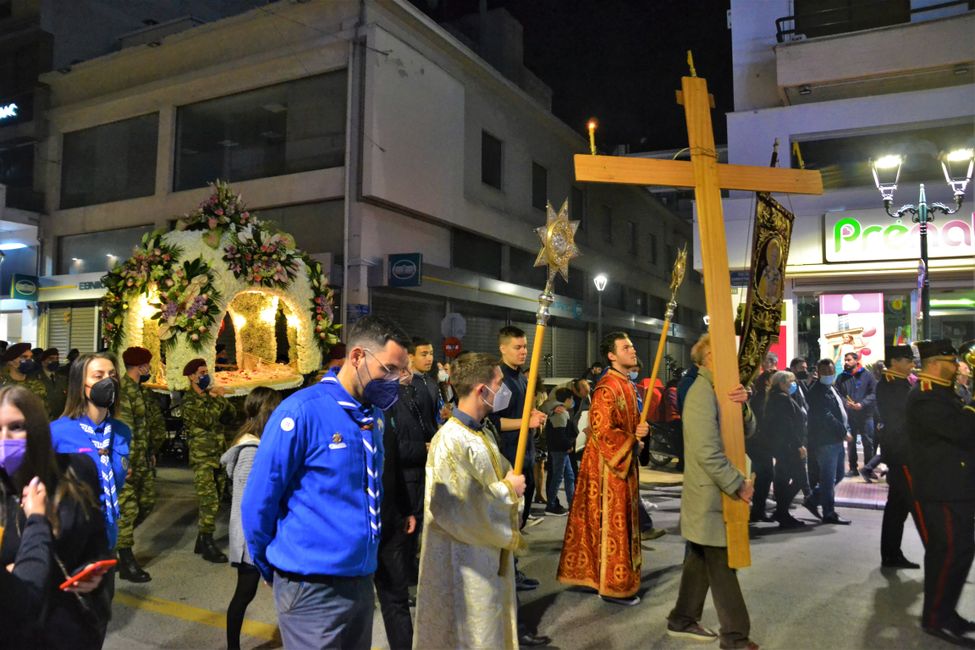
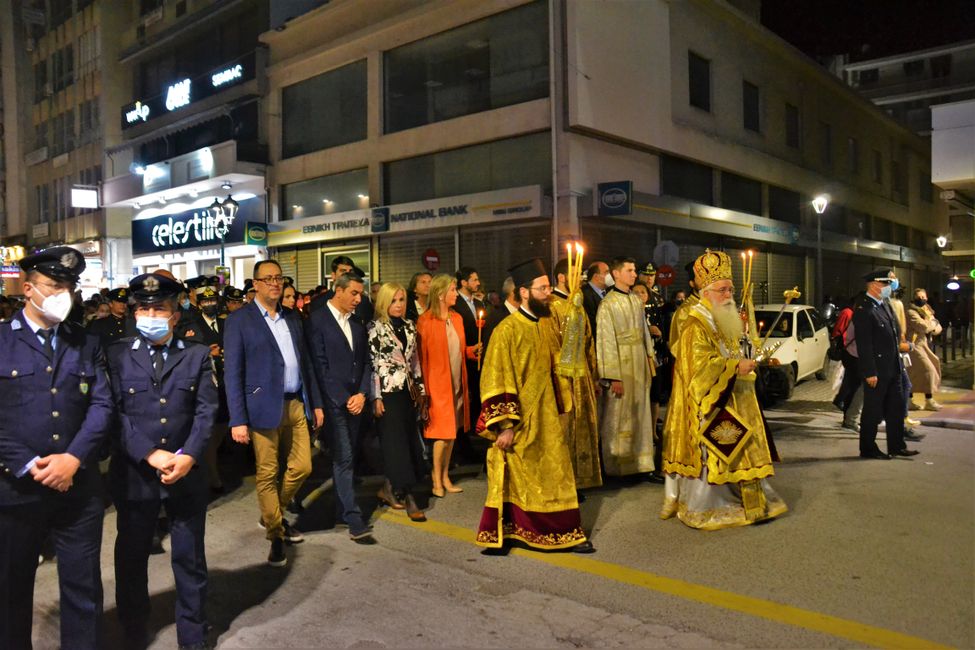
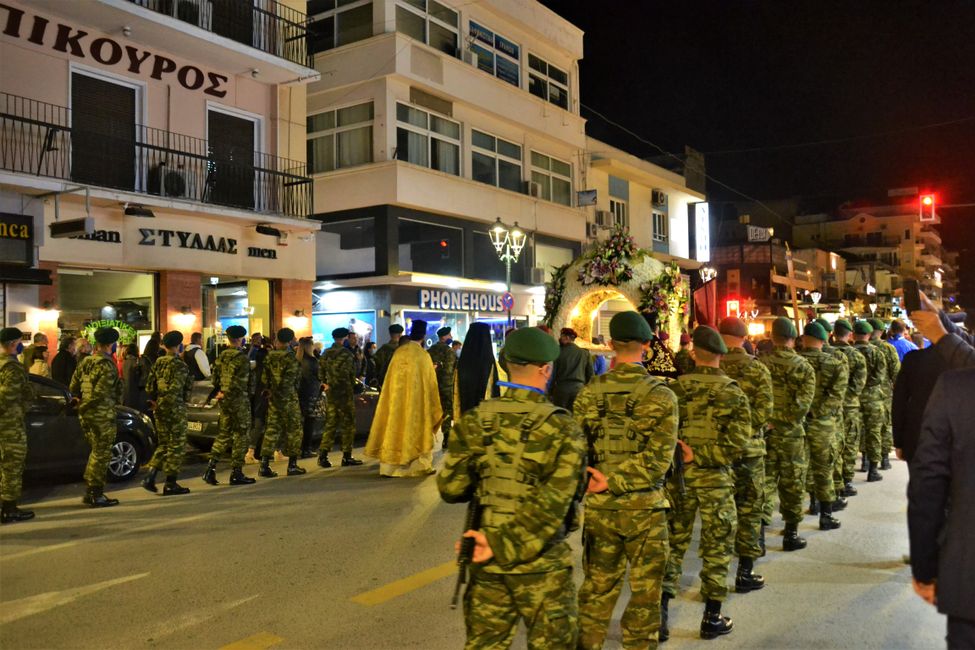
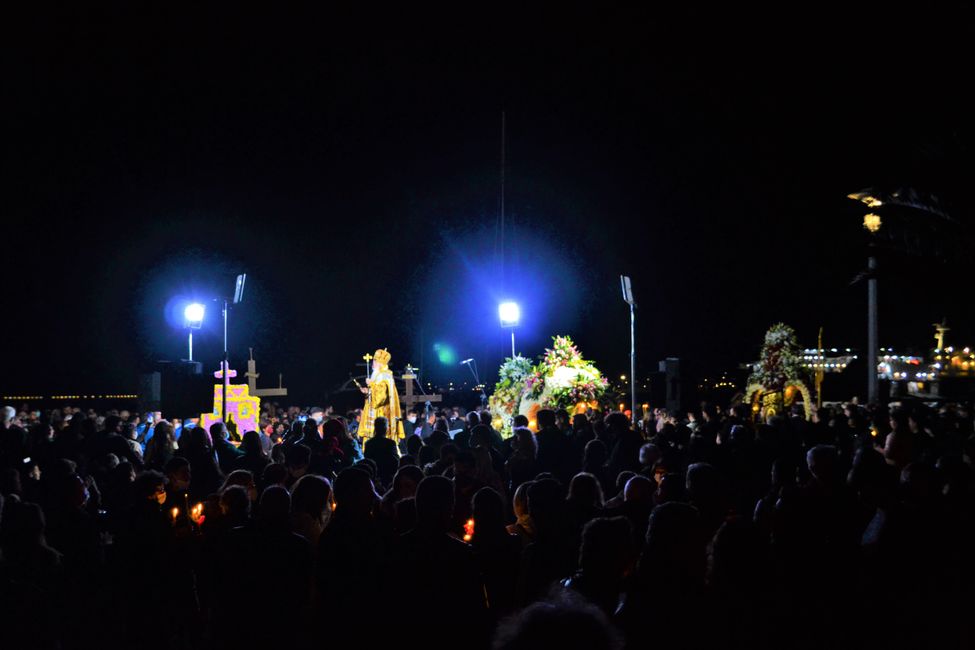
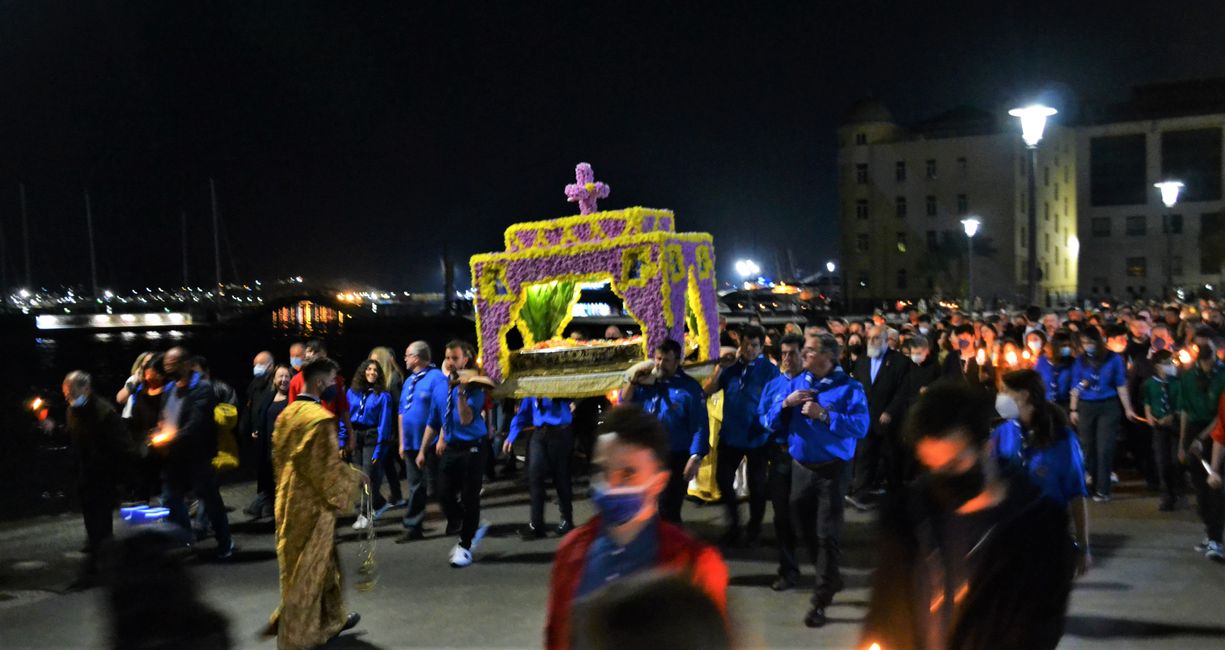
ꯅꯤꯎꯖꯂꯦꯇꯔꯗꯥ ꯁꯕꯁ꯭ꯛꯔꯥꯏꯕ ꯇꯧꯕꯤꯌꯨ꯫
20-22 April 2022: Volos, Agios Ioannis, Milopotamos
We hadn't heard of Volos and the nearby Pelion before, but the area was recommended to us by several locals. Only a few international tourists come here, but many Greeks choose it as their holiday destination.
Pelion is a peninsula with a mountain covered in dense forests, with countless rivers cascading down in thousands of waterfalls. According to legend, this is where the centaurs live, and the gods of Olympus also have their summer residence here. The gods have chosen one of the most beautiful places in Greece for their summer residence. In addition to the dense forest and the bubbling water that seems to come from everywhere, Pelion also has some of the most beautiful beaches in Greece (perhaps even the world). It's no wonder that the movie Mamma Mia was filmed here.

Pelion has 24 ancient villages. Until the 1950s, they were only accessible via steep cobblestone paths that form a network through the forest and connect the villages. Even within the villages, the streets and paths are often steep and still traditionally paved with large boulders. The paths were originally made for pedestrians, but since the road was built and the villages are also accessible by car, there are also motorized vehicles here. Occasionally, I wondered how cars and mopeds manage to climb these steep, bumpy paths. However, the network of these boulder paths between the villages is still used exclusively by pedestrians and is ideal for hiking.




We chose the eastern part of Pelion because the mountains here plunge particularly steeply into the sea. This makes the mountains, as well as the coast and beaches, especially beautiful, and there are also many waterfalls. We started in the small village of Agios Ioannis. From there, the old stone path took us straight up the mountain. On the 360 meters of elevation, we frequently crossed the serpentine roads, but after crossing the road, we disappeared back into the dense forest every time.



Once we reached the top, we rested from the strenuous ascent, admired the view, and followed the road to Kissos. This is where the most beautiful part of the hike was supposed to begin. Far away from civilization, we hiked on stone paths, small trails, and sometimes a bit through the undergrowth downhill until we reached a beautiful river cascading down the mountain in several waterfalls.


Several streams supported each other at this point in a waterfall into the river, and another river flowed into it after two waterfalls further down. The sound of the water was incredibly loud and yet very peaceful. There were huge rocks in the river, which were surely swept away by the water at some point. Branches and half trees were also lying on the shore or caught on one of the many stones or rocks, providing a wonderful place to play with the power of the water. This is where the immense power of nature becomes particularly evident. Here, humans are only guests in a paradise ruled by nature.



After crossing the river via a bridge, we climbed back up through the dense forest. Shortly thereafter, however, we encountered another raging river without a bridge. Although there were some stones in the water, this river is not normally so full. We had to jump quite a distance between two large rocks over the rushing river. As I said, we are only guests here in nature.

During our hike through the mountains and the dense forest, we could well imagine that centaurs live here. According to legend, not only aggressive centaurs lived here, but also a friendly centaur named Chiron, who was a demigod. He was a master of medicine and used medicinal plants from Pelion (which are still used today). He also trained many famous people, including Achilles and Jason, who later retrieved the Golden Fleece with the Argonauts. (Pelion is full of myths. For example, the Trojan War was triggered by an apple at a wedding in Pelion. If you want to know more about the myths or hear the stories, feel free to ask me.)


After our adventurous hike through nature, we came across the town of Mouresi again. From here, we walked on small paths through increasingly sparse forests and finally through olive groves down to the sea in Damouchari. In these olive groves, Meryl Streep and many local women danced to the song 'Dancing Queen' during the filming of Mamma Mia. The beautiful beach of Damouchari also appears in the movie. It consists of white, round pebbles. At the edge, a clear stream flows into the equally clear sea shortly after it has cascaded down a waterfall from the mountain. Along the entire coast here, the sea is incredibly clear and blue at the same time. I find it very impressive.




On the way back to Agios Ioannis, we passed the port of Damouchari. This is where the ferry docked in the Mamma Mia film. The small natural harbor looks even more beautiful in the movie than in reality.


The next day, we visited several other beautiful beaches in the region. From yellow sand to white pebbles, we found everything. Some had dense forests in the background, others were framed by steep cliffs, and some were located right in front of picturesque villages. They all had one thing in common: incredibly clear, blue water, which was still a bit cold but very refreshing at this time of year.



In some beaches and on many roads in Pelion, we could see the force of nature reigning here. Apparently, there was a storm a few months ago, perhaps related to the snowmelt after this particularly cold winter. In any case, there were large branches on many beaches, and in addition to the many rivers and streams, even more had brought sand, branches, and stones down the mountain onto the beaches. Some beach promenades still had debris; one beach was no longer accessible due to large rocks blocking the way. I found the traces left by the storm on the mountain roads particularly impressive and somewhat eerie. In many places, the outer lane had sunk, sometimes it had completely collapsed. There were many construction sites repairing the sunken or missing parts of the road. But at some places, there was also a several-meter-long section on the outer lane that was 30cm lower than the rest of the road and bordered by cracks. We prefer not to drive our vehicle weighing 3.5 tons over it.

On the way from Volos to the eastern part of Pelion, we crossed the peak of the mountain and drove through the ski resort. The roads here were still intact, but we were surprised to see piles of snow at the roadside. Further up, there was even half a meter of snow covering the forest. Fortunately, the road was clear, and we could return to the warm coast.


We noticed that it was almost Orthodox Easter during our hike through the villages. Greeks travel to their families in the villages for Easter, so Athens must seem deserted, while there is particularly much going on in rural areas and on the islands. The restaurants on every village square were full, children played in the streets, and old acquaintances chatted. Thursday was a day for cleaning, tidying up, sweeping, and mowing the lawn. On Friday, the fish restaurants by the sea were fully occupied.

On Friday evening, we were in Volos, the city that is the gateway to Pelion. Here, we wanted to see the Good Friday procession. At half past 8 in the evening, we set off for the city and saw several churches with large crowds of people holding candles in front of them. The church service was broadcast outside through speakers from the crowded church. The atmosphere was solemn and reflective, but also a bit filled with anticipation.

Since we couldn't understand anything and couldn't see anything outside, we continued walking. Near the harbor, among numerous cafes, we found a brightly lit, empty stage on which nothing seemed to happen. We made our way to the largest church in the city, hoping to get a better understanding. On the way, we suddenly encountered first individual, then increasingly more excited people holding candles. We first walked towards them, then followed them. However, since they were coming from different directions, we didn't know exactly where to go until we heard distant brass music. We followed our ears through the streets of Volos and suddenly came across a small group of candle-carrying passers-by. Directly in front of us, the brass band marched down a wide street and played slow, mournful music.

They are the beginning of a longer procession. Behind them, a large wooden cross is carried before the highlight of the procession: a flower-decorated funeral bier, symbolizing the grave of Jesus, is carried by soldiers. Walking backward in front of them are two men swinging incense, and behind them are three priests in golden robes with the typical Orthodox black hats and long beards.


A higher-ranking priest, who is even more finely dressed and carries a golden cross, follows at a few meters' distance. He is surrounded by several men dressed in gold, closely followed by the local, presumably political, celebrities. The community with candles tightly packed together walks down the street, flanked by about 20 soldiers.

The procession is on its way to the stage we saw earlier. We cross the procession and walk along the parallel street to see their arrival at the stage. When we arrive there, the square is already crowded with people, and there are already three flower-decorated funeral biers on the stage. So, there must have been four such processions from four different churches at the same time. When the last procession arrives, a sermon is held before the funeral biers are carried back in four different directions to their respective churches.

Only one of the processions had soldiers and a brass band. We follow another procession to the church. Apparently, the church service is not over yet because the small remainder of the community that made it all the way here goes back into the church.

Day 189 - Overall tour 14,469 km
---- Subscribe ----
If you want to subscribe to our blog, you can either sign up on Vakantio and click on subscribe or send us a message and we will add you to our own distribution list. We also appreciate feedback!
Email: querfeld2@gmail.com
ꯅꯤꯎꯖꯂꯦꯇꯔꯗꯥ ꯁꯕꯁ꯭ꯛꯔꯥꯏꯕ ꯇꯧꯕꯤꯌꯨ꯫
ꯄꯥꯎꯈꯨꯝ
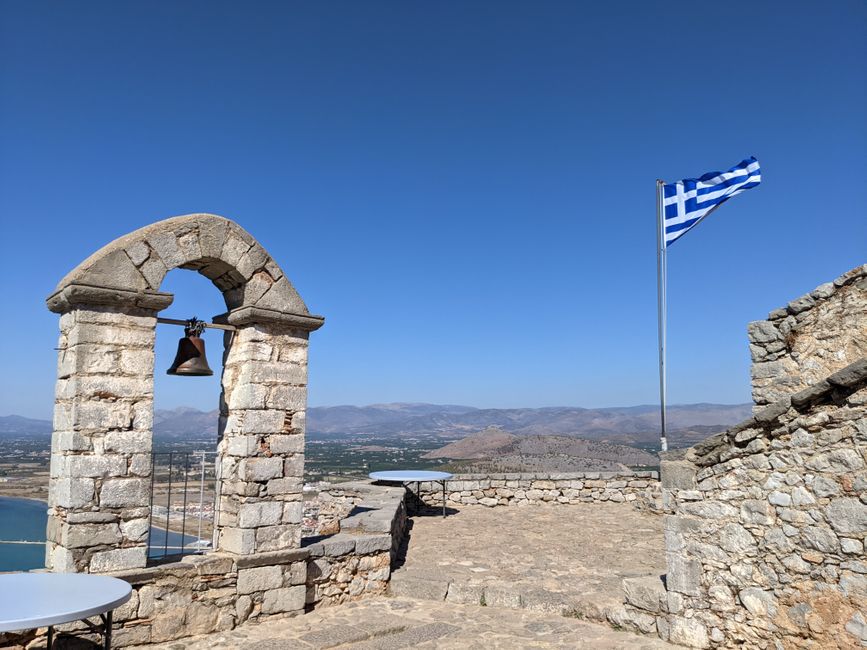
ꯆꯠꯊꯣꯛ-ꯆꯠꯁꯤꯅꯒꯤ ꯔꯤꯄꯣꯔꯇꯁꯤꯡ ꯒ꯭ꯔꯤꯁꯇꯥ ꯂꯩꯕꯥ ꯌꯨ.ꯑꯦꯁ
